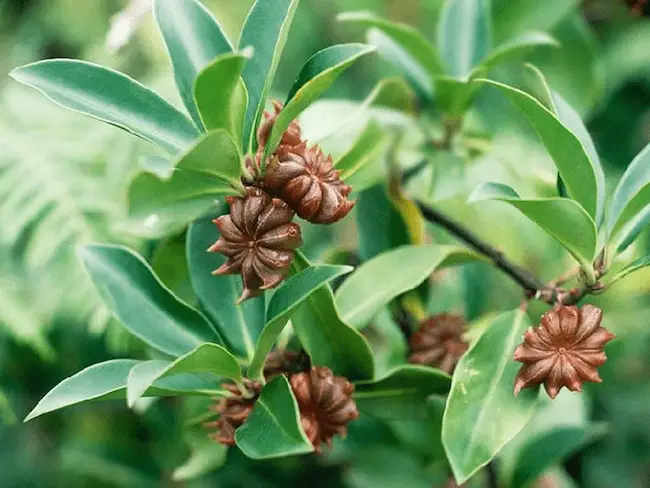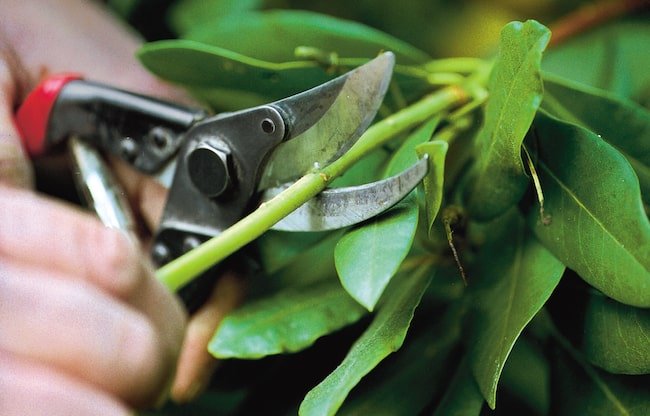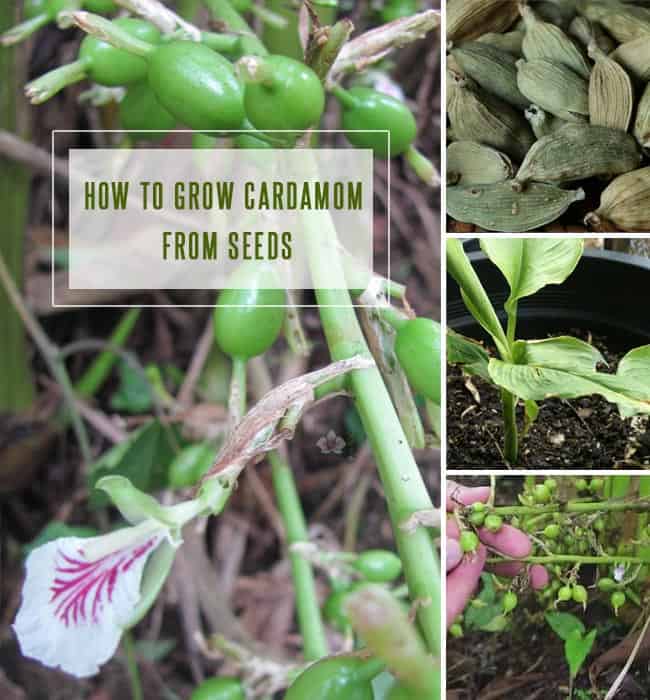How to Grow Star Anise : Growing and Care for Star Anise Plant

Star anise plants are among the fast growing evergreen trees that could occasionally grow up to 26 feet. However, they are usually smaller and have a spread of about ten feet. Do you know how to grow star anise?
The plant produces a fruit that is being made into a spice that produces a smell similar to a licorice. The plant is native to Southern China as well as in Northern Vietnam, where it is commonly being added to the various cuisines from these countries. The star anise was first introduced in Europe during the 17th century and used as a whole. Alternatively, the fruit is also being made into powder or in some cases, extracted into oil.

Image Credit: Biosource Naturals
It is easy to grow star anise especially in subtropical climates. The plant is adorned with star shaped flowers and fruits and produces olive green leaves. Furthermore, the plant gives off cup-shaped and soft yellow blooms.
When crushed, the leaves produce licorice scent as well. However, they are not really part of the tree that is often being used as spices. As mentioned, the fruits are star shaped and it is for this reason why it is called “Star Anise”. And since it is usually common in China, it is also sometimes called the Chinese star anise. Furthermore, the plant comprises of six to eight carpels and each of these contains a seed. The fruits are harvested while they are still green and then dried later under the sun.
Also Read: How to Water Indoor Plants
How to Grow Star Anise Plant

Image Credit: Dave’s Garden
The star anise plant can make for a great hedge. In some instances, it is grown as a standalone plant. It does not have any tolerance for frost and therefore, it cannot be grown in the north.
If you grow star anise, remember that it will require sun to partial shade. This applies to almost all types of soil. In warmer climates, growing the plant under full shade is also a good option. Slightly acidic soil and consistent moisture is what the star anise would need in order to thrive. Well-rotted manure or compost is the only fertilizer that the plant may need.
You can choose to buy a potted star anise to grow in your backyard. It should be easy to find this plant from your local garden center. You can also choose to take summer cuttings from already established star anise plants, since this will root faster and easier.
If you will choose to grow star anise seeds, then you must propagate the seeds in an ideal temperature. It should range between 18 and 20 degree Celsius. You can sow the seeds in a container or directly in the garden. Make sure to water the soil very frequently to keep the soil moist. If you are growing it in a container or pot, then there should be holes at the bottom to drain the excess water.

Image Credit: Balcony Garden Web
If you would prefer to grow through cuttings, then use a sharp knife to cut four to ten inch sections of the stalk. Place the cuttings on a sterile medium, perhaps, in a mixture of sand or peat and perlite. Ensure that the mixture is moist and warm until such time that the cuttings will start to root.
Choose the most appropriate site to grow the plant. The success of this plant will somehow depend on where you choose to grow it. If you choose to grow the star anise in your home, look for an area that receives a lot of sunlight.
Also Read: How to Grow Turmeric Indoors
Star Anise Care

Image Credit: Taverhamnursery
Water your star anise plant on a regular basis. This is especially important if you have chosen to grow star anise from seeds. In fact, you should do this more frequently in the first growing season after planting. This is to help the plant to be able to establish a strong root system.
After the first growing season, you can water the plant according to your desired results. Make sure to water abundantly if you want it to grow rapidly and spread well. In moist areas, the star anise will usually root its branches and could become a bit invasive. For slower growth, water the plant occasionally.
To encourage growth during spring, consider applying acid fertilizer. This must be done right before the shrub’s annual growth will spurt. You can also choose to apply compost or aged manure on the ground in the entire surroundings of the tree in spring. In fact, just applying compost on the tree should be enough to ensure its growth. If you are growing the plant in poor soil, then apply slow fertilizer during spring.

Image Credit: This Old House
Pruning may be needed in order to maintain the size, although it is not really necessary. Pruning also helps to make the plant to become even bushier. There are not any special pruning requirements needed. However, you can always choose to prune dead, weak and diseased branches.
There are not many pests and diseases that could hinder the growth of the plant. The star anise itself has pest repelling properties and anti-bacterial compounds that keeps pests and diseases away.
Harvesting the Star Anise

Image Credit: Pukka Herbs
The star anise tree could take up to six years to grow fruit when grown from the star anise seeds. The fruits, which are sometimes referred as seeds, are harvested unripe and are still green. Later on, they will be left to dry in the sun until such time that the color changes to reddish brown. The seeds can then be removed as soon as the fruits are readily available to be stored.
Star Anise Uses
The star anise spice is used mainly as additives to poultry and meat dishes. In some cases, it is also used as confections. In the traditional Chinese seasoning, the Chinese Star Anise is one of the main ingredients of the “five spice”. Having a sweet scent, the spices are a perfect pairing for pork and duck dishes. On the other hand, the Vietnamese use the star anise as the main seasoning for their infamous pho broth.
Western uses of the star anise are generally confined on preserves as well as anise flavored liqueurs. One good example is the anisette. Furthermore, the star anise is also being used for various curry concoctions, for both its scent and flavor.
The Star Anise is actually ten times sweeter than sugar because it contains a compound called anethole. Its flavor resembles that of a licorice and with a small hint of clove and cinnamon. Therefore, it is commonly used for breads and cakes. The vanocka, which is a kind of traditional Czechoslovakian bread is made out of the star anise and is usually prepared around Christmas and the Eater season.
Also Read: 25 Small Herb Garden Design Ideas
Warnings

Image Credit: Amazon
When growing star anise, never confuse it with the Japanese star anise, also known as Shikimi. This is a poisonous plant that’s native to Japan. The seeds and fruits of this plant are almost the same to the star anise but they are slightly smaller. Furthermore, they look more like a Cardamon, which features a more rounded shape with a small hook.
Final Thoughts
So as you can see, growing the star anise plant is easy. Perhaps, the difficulty lies in caring and maintaining the plant. If you want it to grow successfully, then you need to take good care of the plant.






